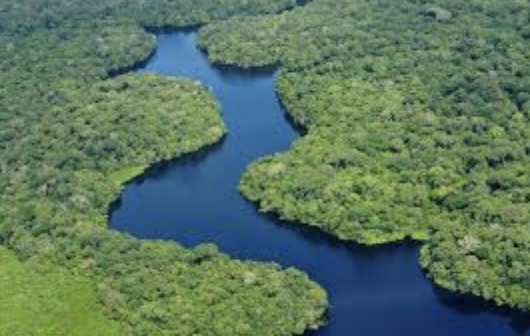The Amazon is a fascinating place full of mystery and intrigue. Let’s take a look at five interesting facts about the Amazon basin and the natural wonders it holds within.
The Amazon basin is the part of South America drained by the Amazon River and all of its tributaries. It is spread across many different countries in South America as well as a foreign territory in the continent.
Most of the basin is covered by the Amazon Rainforest or the Amazonia. Within the basin and the rainforest, there are so many special and unique species, stories, and a rich history.
Here are five interesting facts about the Amazon basin, some of which you may have known before, some of which might be news to you.
- The Amazon basin is home to the world’s largest rainforest
The Amazon rainforest, a moist broadleaf tropical rainforest in the Amazon biome, covers most of the Amazon basin of South America.
Also known as Amazonia or the Amazon jungle, it is the largest rainforest in the world. The Amazon basin alone covers an area of around 6.7 million square miles and is home to 47 million people, including more than two million indigenous people.
The vast and mysterious jungle is unfortunately under increasing threat from human interruption, including mass farming and ranching, infrastructure, and urban development.
- It is spread across eight countries
While the basin is spread across six countries, the vast wilderness of the Amazon spans eight countries, Brazil, Bolivia, Peru, Ecuador, Colombia, Venezuela, Guyana, and Suriname.
Plus, it covers 95% of French Guiana, an overseas department of France located on the northern Atlantic coast of South America.
The river system of the Amazon River starts in the Andes Mountains of Peru; it then travels through Ecuador, Colombia, Venezuela, Bolivia, and Brazil before emptying into the Atlantic Ocean.
Most of the rainforest lies in Brazil, which is home to around one-third of the world’s remaining rainforests.
- The Amazon basin contains the largest number of freshwater fish species in the world
The Amazon basin, river, and its tributaries contain more than 3,000 species of freshwater fish. There is the possibility that there are also many more unidentified species.
There are some fascinating fish in the Amazon basin, including the Arapaima, the world’s largest freshwater fish.
Furthermore, there are three species of electric eel in the Amazon. The World’s most powerful electric eel was found in the Amazon in 2019; these are some of the most dangerous fish in the world.
Other well-known species found in the Amazon basin include the tambaqui, candiru, red-bellied piranha, armored catfish, pancake stingray, and so many more.
- It is home to as many as 80,000 plant species
The Amazon is home to up to 80,000 plant species. From these, over 40,000 species play a critical role in regulating the world’s climate and sustaining local water cycles.
Furthermore, as being such a place of biodiversity, there are said to be anywhere between 40 and 100 species of tree found in a 1-hectare plot of land in the Amazon.
These trees and plants play a huge role in regulating the global climate. Plus, they are the home to many species who call this rainforest home.
Furthermore, they are a source of food, medicine, and agriculture for Amazon people, both indigenous and recent arrivals to the region.
- The Amazon basin is twice the size of India
The Amazon basin alone covers 6.7 million square miles, which is twice the size of India, the 7th biggest country in the world.
To put this into perspective, that’s 28 times the size of the United Kingdom. Furthermore, it is roughly the size of 48 contiguous United States.
The huge rainforest covers almost 40% of the South American continent. It is a huge expanse filled with wildlife, people, and history.
The perfect place for lovers of nature and biodiversity, the rainforest and its expanse were certainly named one of the ‘New 7 Wonders of Nature of the World’ for a reason.
So, there you have it. Five interesting facts about the Amazon basin you may or may not have known before. Are there any interesting facts you think we missed?

Leave a Reply